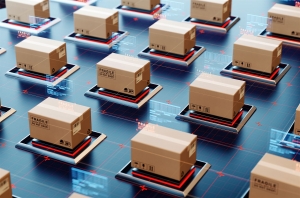
If you look at the next-gen technologies that are fundamentally changing the future of business – artificial intelligence, advanced analytics, the Internet of Things – they all have something in common. They all help organizations and entire industries achieve a level of efficiency that was previously impossible. By standardizing processes at a massive scale, businesses can gather all of the information needed to make the best decision possible at any given moment.
In the logistics and transportation industry, few technologies are having this level of impact like blockchain. It’s most commonly known as the basis for cryptocurrency. But shared, distributed ledgers are upending standard processes like automated billing, scheduling, document management, and other back-office tasks. Furthermore, it offers transportation companies new applications such as audit trails, transaction history, and product traceability.
What’s most important, however, are the ways blockchain is increasing transparency and accountability across the entire community of fleets in the United States. Here’s how:
- Seamless Tracking – One of the major influencers of blockchain in the trucking industry is the Blockchain in Transport Alliance (BiTA), of which Omnitracs is a proud member. Together, the collection of organizations is creating a single standard by which the entire industry can follow. By establishing that standard through the blockchain, any organization can seamlessly and efficiently track movement and other business operations, no matter who you partner with. Learn more in this article: BiTA blockchain standards bring the industry closer to seamless shipment tracking
- Democratizing Information – In an article contributed to TechCrunch last year, Co-founder and CTO of Transfix Jonathan Salama wrote, “data entered into the blockchain cannot be modified or corrupted. What’s more, because the ledger is distributed, there is no single central authority that’s in charge of certifying the information.” Translation? The blockchain creates a single data hub for all participants, so everyone is reading from the same choir sheet.
